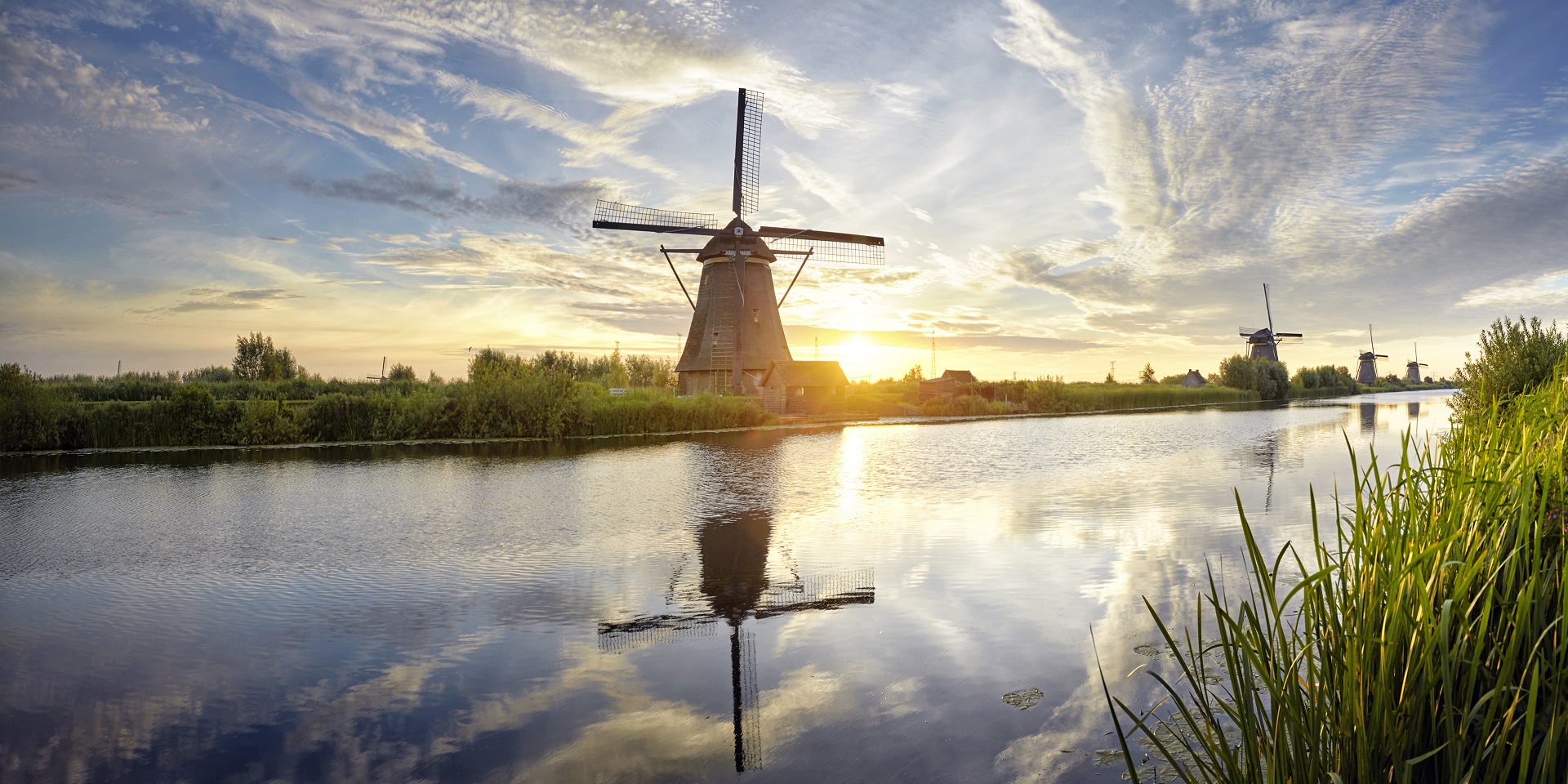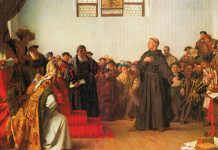On the continent jaded by an irrelevant religion, a new denomination appeared, in addition to the Lutheran, Calvinist, and Anglican Protestants—the Arminians.
Most people know the Netherlands as the land of windmills or the home of Vincent van Gogh. Few know that in the middle of the second millennium AD the area of the Netherlands was a refuge for all who sought “the paradise of religious freedom.”
The sixteenth and the seventeenth centuries were centuries of great religious upheaval in almost all of Europe, and the Netherlands could not remain indifferent. After centuries of fierce domination by the Catholic Church, Lutherans, Calvinists, and Anglicans claimed new territorial conquests both through the sword of the Word and, unfortunately, through the sword of war.
The intuition of freedom
Time was no longer patient with the ecclesiastical authorities stuck in the clothes of the past. There was no time for hesitation and meditation. Protestants made their way to Northern Europe and won significant victories. In the Netherlands, the stars seemed to be aligned for the categorical victory of Calvinism. However, with the emergence of Arminianism, it faced unexpected opposition. The Arminians were neither on the pope’s side, nor on Luther or Calvin’s side. They were to unleash an unexpected reform by their teachings, a sort of a protest to the protest.
The movement’s main figure was Jacobus Arminius (1559–1609). A theologian, pastor, and professor, educated at Leiden University, Arminius was the catalyst for and the leader of this religious movement. Travelling extensively in Italy, studying in Geneva, being a disciple of Theodore Beza, Arminius tried to make some changes to Calvinism that he considered necessary. He asserted that God is not the author of sin and that man is not a puppet without free will in the hands of a Creator who predestines everything from the beginning.
In a world where God’s irresistible grace became “irresistible” by force and military threat, the Arminians (or Remonstrants) would opt for a belief in which man has value in and of himself. That such a position would prevail over dogmas that often crushed the value of the individual was understandable.
It is clear that in Northern Europe a new religious movement was forming, which promised a fresh kind of spirituality, a confession of faith that gave value to the choice made by the individual at the expense of the rigid predestination claimed by Luther and, more strongly, by Calvin. Perhaps the most outrageous statement of the Arminians was that humans can contribute to their salvation by accepting God’s invitation, after God has previously given them the grace that makes their will able to cooperate with God.
Maybe this was too dangerous a freedom for the rigid ecclesiastical authorities of the sixteenth century, or maybe this innovative theology had not yet sufficiently refined itself in the realm of rigid dogmas. Nevertheless, one thing is certain: human dignity and the value of personal choice were to be brought back to people’s attention at a time when conversions to Protestantism were happening at a rapid pace.
And, no, the Dutch Arminians were not rebels without a cause. They were not the atheists of their time; they did not flirt with Descartes’ scepticism. They were religious and fearless in their search, as were the ships they sailed with great ease across the oceans. Possessing one of the strongest navies in the world at the time, the Dutch understood that religion was a similar process: it meant walking on water rather than on land and that the uncertainty of freedom was more valuable than the security of slavery.
They understood that the Bible is the source of spiritual waters that can be insatiably explored.
Since they were experts in exploring the seas and the oceans, they understood that the Bible is the source of spiritual waters that can be insatiably explored. They sought to study, to analyse, to question what was being delivered to them politically or religiously. They tried to digest things first. The religious reform did not go smoothly. There were sacrifices and pressures, struggles and hardships, but freedom is seldom gained by staying in a comfort zone.
The blood that sealed the change
Arminius asked the government to summon a national synod to settle the theological debate, but he died before the synod was convened. Supporters of his cause, including Hugo Grotius, author of international law texts, published their ideas in the work Protest, in 1610. The Synod of Dort was finally summoned by the Dutch Reformed Church. The event took place in Dordrecht, between 1618 and 1619, against the background of the continuous rise of Arminianism.
Behind the theological debate, there was inevitably a political tension between Prince Maurice, a powerful military leader, and his former mentor, Johan van Oldenbarnevelt, the Grand Pensionary (chief official and legal adviser) of the Netherlands and the personification of civil power. During the more than 150 meetings, Simon Episcopius (1583–1643), the movement’s leading theologian, was the spokesperson of the Remonstrants who appeared before the assembly.
The opponents of the Arminians were the strict Calvinists, called Gomarists, represented by Franciscus Gomarus, along with other prominent leaders. The synod ended with a rejection of the Arminian position and teachings. Grotius and other leaders were eventually arrested. Five days after the end of the synod, Oldenbarnevelt was beheaded. Grotius miraculously escaped from prison. It was later claimed that the outcome had been decided before the convening of the synod, but this was never proven.
Only later, after the death of Maurice (1625), were the Remonstrants guaranteed state tolerance and given the freedom to pursue their religion in peace and to build churches and schools. The Remonstrant Theological Seminary was established in Amsterdam, and Episcopius and Grotius were among its first teachers.
The Netherlands later became a haven for those persecuted in other European countries. During the seventeenth and eighteenth centuries, the people who were persecuted came there for relief, to bind the wounds caused by other religious swords. Although isolated, the conflict between Catholics and Protestants persisted in the Netherlands. The proportion of immigrants from outside the Netherlands among the population of Amsterdam had reached almost 50%.
Many Jews, especially from Antwerp, emigrated to Amsterdam. The Netherlands hosted religious refugees, including Puritans from England. Protestant Huguenots in France fled to Amsterdam after the revocation of the Edict of Nantes and the resumption of persecution and attacks by Catholics.
Larger cities became hospitable to refugees, because in rural areas the attitudes were much more rigid. This patch of land would become an area free of religious oppression and the European cradle of freedom of conscience.
The history of the Arminians proves that they did not fight windmills, but had an objective battle.
At that historical hour, the Dutch Arminians were on the fringes of the great religious upheaval in Europe, but they had a very important achievement of their own. They gave back to free will a value that no one wanted to give. They did not conquer a country, but regained the individual values of the human being.
One thing is certain: mankind’s religious freedom has a few drops of the blood of the Dutch martyrs in its DNA. In the words of Romanian novelist Ionel Teodoreanu, “the Dutch turned a swamp into a country.” Europe was still a religious swamp when they thought it would be good to build a country that was friendly to any creed. At least they dared to dream. It wasn’t a bad idea at all.
Mihai Miron is the pastor and director of the Department of Religious Freedom of the Adventist Church in Southern Transylvania.




















